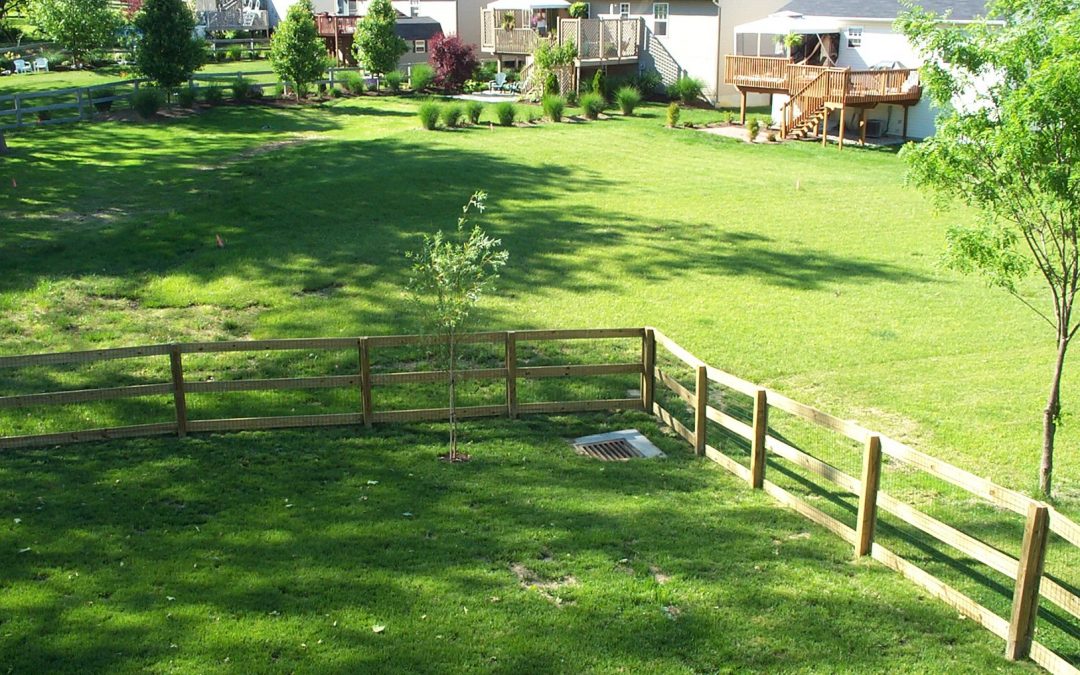If you’ve got a yard, you’re likely spending some time taking care of it. After all your hard work, it can be frustrating to discover unsightly lawn problems. This may be small comfort, but you’re far from alone.
The 5 Most-Common Lawn Problems
- Lawn Diseases
- White grubs
- Weeds
- Brown patches/dead spots
- Dog urine
The best way to avoid lawn problems is to grow and maintain a healthy lawn. Start by choosing a grass type that will grow well in your area. That alone will give your lawn the best chance against pests, weeds and lawn disease. Read on to learn more about the most common problems that may be plaguing your lawn.
1. Lawn Diseases
Brown Patch Disease
Brown patch disease happens most frequently during hot, humid summer months. The University of Massachusetts Extension says “Brown patch caused by Rhizoctonia solani is the most widespread of all turf diseases occurring throughout the world and attacking all known turfgrasses.” You’ll notice large irregular circles of brown grass. Tall fescue and ryegrass are particularly susceptible.
Rust
Rust is a fungal disease caused by fungal spores. It leaves yellow-orange spots with a powdery residue in your grass. The spores prey on under-watered and over-watered lawns. They’ll also attack lawns that are lacking in key nutrients like nitrogen.
Snow Mold
Snow mold develops under snow that sits on your lawn for extended periods. There are two types: pink snow mold and gray snow mold. It appears in early spring when the snow melts as gray or pink-hued patches of white. Pink snow mold can also grow during cool, wet weather without any snow. Prevent snow mold by gradually cutting the grass shorter ahead of winter, and by not leaving a thick layer of leaves on your lawn over the winter. A preventative fungicide may also help.
Dollar Spot
Dollar spot shows up as patches of silver-dollar sized brown patches in your lawn. It’s caused by a fungus and is very common on golf courses and recreational turf fields. It affects cool and warm-season grasses and can appear anywhere from late spring to late fall. It thrives in warm, humid conditions and after long periods of wet weather.
2. White Grubs
White grubs are beetle larvae and larvae of other types of insects. White grubs feed on grass roots, causing irregular brown spots in your yard. You’ll notice this damage most often in the fall.
You can tell you have an infestation if you can pull up the dead turf like a rug, revealing the C-shaped white larvae on top of the soil. You may also notice birds on your lawn because they love to feast on the grubs. Other animals are attracted to the scent, including raccoons, opossums, moles, and skunks. They’ll dig up your yard to get to the grubs, so lawn damage is another sign you may have an infestation.
3. Weeds
Weeds may be the king of lawn problems, or at least one of the most common. Weeds like crabgrass and dandelions will take over your yard if given the chance, especially if your lawn isn’t healthy. To avoid this, use good lawn care practices. These include regular mowing with a sharp blade and adequate watering for your grass type. To conserve water, supplement rainfall with a regular watering schedule. Weeds will have a harder time taking hold in a thick, healthy lawn with a healthy root system.
4. Brown Patches or Dead Spots
These problems show up for many different reasons. These include foot traffic, lawn diseases, compacted soil or broken or badly adjusted sprinklers. Aerating once a year can help with compacted soil and in the prevention of lawn diseases. Test sprinklers to see if you need to adjust or replace them. In areas with high foot traffic, consider replacing the grass with a pathway using rocks, pavers or wood chips. You could also hardscape the area rather than continually reseeding or replacing the turf.
5. Dog Urine Damage
Dog urine contains high amounts of nitrogen which can burn your grass and cause it to turn brown. Dark green grass can sometimes ring the brown patches. Train your dog to take care of business in one part of your yard. Consider re-planting damaged grass with a urine-resistant grass like tall fescue or ryegrass.
Recognizing these common lawn problems is the first step in fixing them. Preventing these problems before they start is even better. Regular mowing, watering, and lawn care can go a long way in keeping these unwelcome issues off your lawn.
Main image credit: Veracious Rey, CC by-SA 3.0

